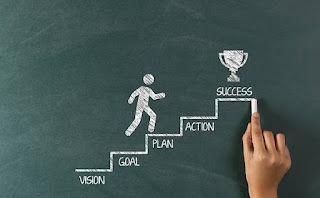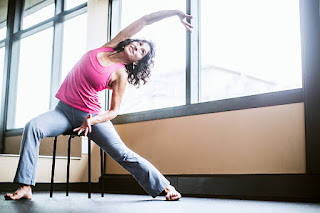Yoga Poses for Beginners: An Introduction to Basic Asanas
Yoga, an ancient practice rooted in Indian philosophy, has traversed centuries to become a global phenomenon, offering a sanctuary for those seeking tranquility and an enhanced state of physical and mental well-being. At the heart of yoga lies a simple yet profound promise: to unite the mind, body, and spirit through a combination of physical postures, breathing techniques, and meditation. This article, “Yoga Basics: Understanding the Fundamentals,” is designed as a comprehensive guide for beginners eager to embark on their yoga journey. From the gentle, grounding poses of Hatha Yoga to the dynamic sequences of Ashtanga Yoga, we explore the foundational asanas that pave the way to a healthier, more balanced life. We delve into the importance of breath in yoga, revealing how breathwork can transform your practice and your life by enhancing mental clarity and stress management. Meditation, another pillar of yoga, is demystified, offering simple techniques that beginners can incorporate to achieve detached awareness and inner peace. Furthermore, we provide practical tips for integrating yoga into your daily routine, making it accessible regardless of your lifestyle or schedule. Finally, we address common challenges faced by yoga practitioners, including issues with flexibility, strength, and patience, and offer solutions to overcome these obstacles. Whether you’re looking to manage chronic pain, improve your mental health, or simply find a moment of peace in your hectic day, this guide offers the keys to unlocking the transformative power of yoga. Join us on a journey to discover the basics of yoga, where every pose is a step towards self-discovery and every breath a bridge to harmony.
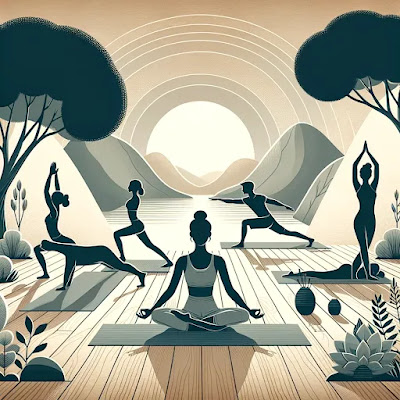
Yoga Poses for Beginners: An Introduction to Basic Asanas
Embarking on the path of yoga begins with understanding and practicing basic asanas (poses), which lay the foundation for a fulfilling yoga journey. These initial steps into yoga are not just about physical exertion; they are about establishing a harmonious connection between your mind, body, and the breath that animates them. For beginners, starting with Hatha Yoga, known for its gentle and slow-paced approach, is ideal. It introduces the fundamental postures and breathing techniques, preparing the body and mind for more advanced practices like Ashtanga Yoga, which involves a more dynamic and physically demanding sequence of poses.
Exploring Hatha and Ashtanga Yoga for Beginners
Hatha Yoga serves as the perfect introduction to the world of yoga, emphasizing physical postures and breathing exercises that promote body awareness and relaxation. Ashtanga Yoga, on the other hand, offers a rigorous workout through its six series of poses, each progressively more challenging than the last. Both styles play a crucial role in developing flexibility, strength, and balance, essential components of a comprehensive yoga practice.
Key Basic Poses to Start Your Yoga Journey
- Mountain Pose (Tadasana): This pose teaches basic alignment and is a starting point for other asanas.
- Downward-Facing Dog (Adho Mukha Svanasana): A fundamental pose that strengthens and stretches the entire body.
- Warrior Poses (Virabhadrasana I & II): These poses improve focus, increase strength, and enhance stability.
- Tree Pose (Vrikshasana): This balancing act fosters concentration and calms the mind.
- Seated Forward Bend (Paschimottanasana): It stretches the back, promotes inner peace, and helps relieve stress.
Benefits of Regular Yoga Practice
Practicing these basic poses regularly can lead to significant improvements in physical and mental health. Physically, yoga enhances flexibility, muscle strength, and posture. Mentally, it aids in stress relief, improves concentration, and contributes to a balanced mood. For those dealing with chronic low back pain, incorporating specific yoga interventions can provide much-needed relief.
Moreover, yoga’s focus on deep, mindful breathing has therapeutic effects, helping to manage stress, improve lung capacity, and increase overall physical energy. The gentle yet powerful practice of yoga poses, combined with deep breathing, prepares the practitioner for the more introspective and spiritual aspects of yoga, such as meditation and mindfulness.
Yoga is not just about achieving the perfect pose; it’s about the journey towards self-discovery, inner peace, and the harmonious balance of the physical and mental realms. As you continue to explore the vast world of yoga, remember that every pose is a step toward understanding your body’s capabilities and limitations, and every breath is an opportunity to connect more deeply with yourself.
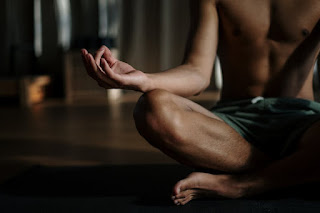
The Importance of Breath in Yoga: Techniques and Exercises
Breathing is the essence of life, and in yoga, it’s the cornerstone of practice. Pranayama, or the art of breath control, is a key component of yoga that enhances the connection between the mind, body, and spirit. Understanding and mastering breathing techniques are vital for anyone looking to deepen their yoga practice and unlock its full therapeutic potential.
Breathing Techniques (Pranayama) and Their Role in Yoga
Yoga introduces practitioners to various breathing techniques, each designed to serve different purposes. For beginners, starting with simple pranayama exercises can significantly impact mental and physical health. These techniques include:
- Ujjayi Pranayama (Victorious Breath): This technique is performed by inhaling and exhaling through the nose with the throat slightly constricted, creating a soothing ocean sound. It’s particularly beneficial for focusing the mind and warming the body.
- Anulom Vilom (Alternate Nostril Breathing): This practice involves inhaling through one nostril, holding the breath, and exhaling through the other. It’s known for balancing the left and right hemispheres of the brain, calming the mind, and improving respiratory functions.
Gentle Yoga and Breathing Exercises for Stress Management and Chronic Pain Relief
Incorporating gentle yoga poses with focused breathing exercises can significantly relieve stress and manage chronic pain. For instance, pairing the gentle flow of Cat-Cow stretches with deep, mindful breathing can help release tension in the spine and promote relaxation throughout the body. Similarly, practicing deep breathing while in Child’s Pose (Balasana) allows for a soothing release, making it an excellent practice for calming the nervous system and easing mental strain.
How Deep Breathing Enhances Physical Energy and Inner Peace
Deep, conscious breathing is a powerful tool for rejuvenating the body and promoting a sense of inner peace. By oxygenating the blood and releasing toxins from the body, deep breathing exercises enhance physical energy and mental clarity. Moreover, the practice of pranayama helps in regulating the body’s stress response, reducing anxiety, and fostering a state of detached awareness where one can experience true inner peace.
In the fast-paced world we live in, finding moments of tranquility can be challenging. However, through the consistent practice of yoga and breathing exercises, individuals can discover a profound sense of calm and well-being. As you continue to explore the various aspects of yoga, remember that the journey is as much about the breath as it is about the poses. The breath is your guide, leading you to deeper levels of awareness, health, and harmony.
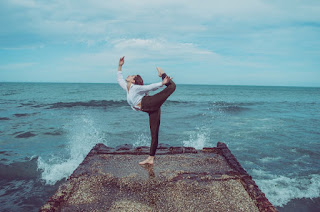
The Role of Meditation in Yoga: Merging Mindfulness with Asanas
In the journey of yoga, meditation and asanas (yoga poses) are interwoven threads that together create a tapestry of holistic well-being. While asanas focus on the physical alignment and strengthening of the body, meditation deepens the yoga practice by nurturing the mind’s focus and fostering a profound sense of inner peace. This section explores how beginners can seamlessly integrate meditation into their yoga routine, enriching their experience of both the physical and mental aspects of yoga.
Blending Meditation with Yoga Poses for Enhanced Mental and Physical Health
Integrating meditation into the practice of asanas allows for a more enriched yoga experience, where each pose becomes an act of mindfulness. This fusion not only enhances physical flexibility and strength but also promotes mental clarity and calmness. For beginners, this holistic approach to yoga can be profoundly transformative, offering a pathway to balance and harmony within the body and mind.
Simple Meditation Techniques for Beginners Within Asanas Practice
- Mindful Breathing in Asanas: Begin your yoga session by incorporating mindful breathing into each pose. For instance, while holding the Mountain Pose (Tadasana), focus on deep, steady breaths to cultivate a sense of grounding and presence. This practice helps center your mind, making the transition between poses a meditative experience.
- Visualization During Poses: In poses like the Warrior (Virabhadrasana) or Tree Pose (Vrikshasana), visualize strength and stability. This technique not only enhances the physical benefits of the poses but also supports mental focus and inner strength.
- Savasana (Corpse Pose) for Deep Meditation: Conclude your yoga practice with Savasana, allowing your body to relax fully on the floor. This pose is an opportunity to practice deep meditation, focusing on the breath and releasing tension from the body and mind. It’s a moment to absorb the benefits of your physical practice, bridging the gap between asanas and meditation.
The Transformative Power of Meditation in Yoga
Incorporating meditation into yoga asanas practice offers a holistic approach to well-being, addressing both physical health and mental tranquility. For beginners, this integrated practice can accelerate the journey towards achieving inner peace, enhanced focus, and a deeper understanding of the mind-body connection. The fusion of meditation and asanas embodies the essence of yoga, where every breath and movement is a step towards self-discovery and spiritual harmony.
Incorporating Yoga into Your Daily Routine: Tips and Tricks
Making yoga a part of your daily life can seem challenging amidst our busy schedules, but its benefits for physical health, mental clarity, and emotional balance make the effort worthwhile. Integrating yoga into your daily routine doesn’t require hours of practice; even a few minutes can make a significant difference. This section provides practical tips and tricks to help you seamlessly blend yoga into your everyday activities, ensuring a more balanced and harmonious life.
1. Start Small and Be Consistent
The key to building a lasting yoga practice is consistency. Begin with just 10-15 minutes a day, focusing on a few simple poses or breathing exercises. This manageable approach helps establish a routine without overwhelming you, making it easier to stick with it over time.
2. Create a Dedicated Space
Having a designated space for your yoga practice can significantly enhance your experience. It doesn’t have to be an entire room – a quiet corner where you can unroll your mat is sufficient. This space becomes a sanctuary where you can retreat and connect with yourself.
3. Integrate Yoga with Daily Activities
Yoga can be more than a separate part of your day; it can be woven into daily activities. Practice deep breathing while at your desk, perform a few stretches during breaks, or end your day with a relaxing pose like Child’s Pose or Legs-Up-The-Wall. These small integrations can make a big difference in your overall well-being.
4. Use Technology to Your Advantage
Leverage technology by using apps or online resources to guide your practice. Whether it’s following a morning yoga sequence on YouTube or setting reminders to take breathing breaks, digital tools can help keep you on track and introduce variety into your practice.
5. Listen to Your Body and Mind
Remember, yoga is a personal journey. Pay attention to your body’s needs and your mind’s state as you practice. Some days you might crave a vigorous sequence, while on others, gentle stretches and meditation may feel more appropriate. Honoring where you are each day ensures your practice supports you wholly.
6. Connect with a Community
Joining a yoga class or group, even virtually, can provide motivation and support. Sharing your journey with others offers encouragement and can deepen your understanding of yoga through shared experiences and insights.
Incorporating yoga into your daily routine is about creating moments of mindfulness and connection throughout your day. It’s a gentle reminder to pause, breathe, and realign with your inner self amidst life’s busyness. By following these tips, you can cultivate a yoga practice that not only fits into your schedule but also enriches your life in profound ways.
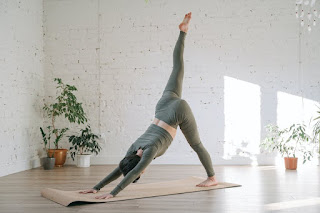
Overcoming Common Yoga Challenges: Flexibility, Strength, and Patience
Embarking on a yoga journey is an enriching experience, but it’s not without its challenges. Many beginners face hurdles such as limited flexibility, insufficient strength, and a lack of patience, which can sometimes feel discouraging. However, these challenges are not roadblocks; they are opportunities for growth and deeper understanding of one’s body and mind. Here are strategies to overcome these common yoga challenges, paving the way for a more fulfilling practice.
1. Flexibility: Start Where You Are
One of the most common misconceptions about yoga is that it’s only for the flexible. In reality, yoga is for everyone, and it’s about progress, not perfection. If flexibility is a challenge, embrace poses that gently stretch your muscles, like the Standing Forward Bend (Uttanasana) or the Butterfly Pose (Baddha Konasana). Use props like yoga blocks or straps to assist you in poses, gradually increasing your range of motion over time. Remember, flexibility increases with consistent practice, so be patient and kind to your body.
2. Strength: Build Gradually
Yoga is an excellent way to build strength in a balanced and holistic manner. If you find certain poses challenging due to lack of strength, focus on foundational poses like Plank Pose (Phalakasana) and Chair Pose (Utkatasana) to build core, arm, and leg strength. Incorporating these poses into your routine will gradually enhance your overall strength, making more advanced poses accessible in time.
3. Patience: Embrace the Journey
Yoga is not just a physical practice; it’s a mental and spiritual journey that teaches patience and mindfulness. If you find yourself becoming impatient with your progress, take a moment to reflect on your journey and celebrate the small achievements. Yoga is about being present in the moment and understanding that growth takes time. Cultivating patience through your practice can have profound effects on your overall well-being, extending beyond the mat into daily life.
Overcoming Challenges Through Mindfulness and Practice
Facing challenges in yoga is a natural part of the learning process. Each hurdle offers a chance to learn more about your body’s capabilities and limitations, fostering a deeper connection with yourself. By approaching these challenges with mindfulness, persistence, and a willingness to learn, you’ll discover that you can overcome them, leading to a richer, more rewarding yoga practice.
Remember, yoga is a personal journey unique to each individual. It’s about finding balance, harmony, and inner peace, regardless of how flexible or strong you may be. Embrace each challenge as an opportunity to grow, and let your yoga practice be a source of strength, patience, and joy.
Conclusion: Embracing the Journey of Yoga
As we’ve explored the fundamentals of yoga, from the basic asanas for beginners to the profound practices of breath control and meditation, it’s clear that yoga is much more than a series of physical exercises. It’s a holistic discipline that nurtures the mind, body, and spirit, offering a path to balance, health, and inner peace. Incorporating yoga into your daily routine and overcoming common challenges such as flexibility, strength, and patience are part of the journey that leads to personal growth and well-being.
Yoga invites you to embark on a journey of self-discovery, where each pose and breath brings you closer to your true self. It’s a practice that adapts to your unique needs and evolves with you over time, offering endless opportunities for learning and growth. Whether you’re seeking to alleviate physical pain, reduce stress, or find a deeper sense of peace, yoga offers the tools and insights to help you achieve these goals.
Remember, the journey of yoga is personal and unique to each individual. There’s no right or wrong way to practice, as long as you approach it with intention, openness, and a willingness to explore. As you continue on your path, let the principles of mindfulness, patience, and persistence guide you. Yoga is not just about the destination; it’s about the experiences and transformations that occur along the way.
We hope this guide has inspired you to either begin or deepen your yoga practice, embracing the countless benefits it has to offer. As you unfold into your yoga journey, may you find joy in every breath, strength in every pose, and peace in every moment.
Namaste.




